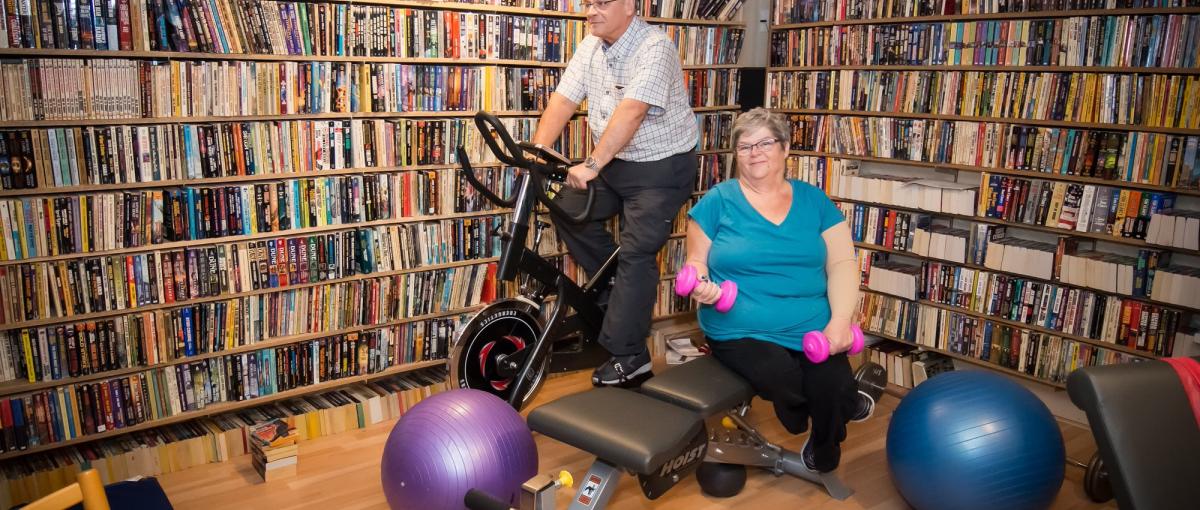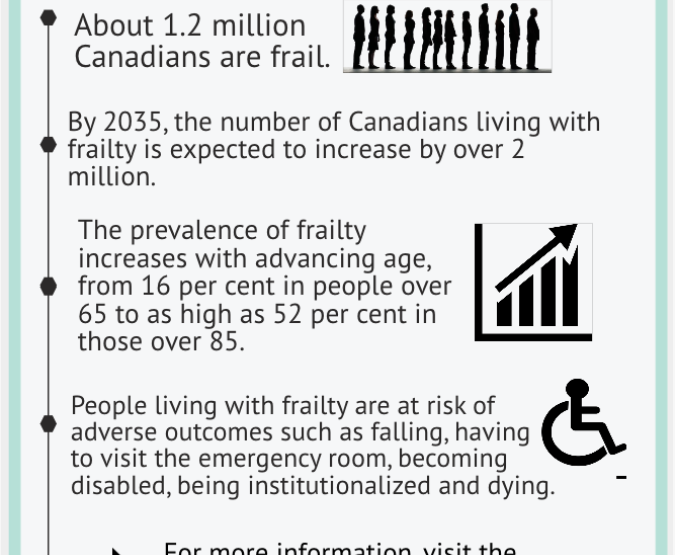Seniors learn to age well through new integrated care model
Seniors’ Community Hub is helping seniors remain independent as long as possible

January 18, 2018
By Marguerite Watson, senior advisor, content
Louie and Diane Omerzu marvel at how their lives have changed since Louie became involved with the Seniors’ Community Hub.
“I’ve gotten back in the habit of working out,” says Louie.
“And I’m cooking far differently than I did before,” says Diane.
Louie, 70, had always been active, but when he retired, he suddenly became sedentary. He put on weight and had high blood pressure and problems with his knees. He went to see his doctor at the Misericordia Family Medicine Centre, and she suggested he join the Seniors’ Community Hub at the Edmonton Oliver Primary Care Network (PCN).
Soon after his first visit to the hub in 2017, he started a six-month exercise program with a kinesiologist. Louie and Diane, 63, also worked with a dietitian and attended classes on healthy eating.
“We haven’t accessed everything the hub has to offer, but we know it’s there if we need it,” says Diane.
The Seniors’ Community Hub is a new model of integrated health care for seniors launched in 2016 by Dr. Marjan Abbasi, who works with the geriatric assessment unit at the Misericordia Community Hospital, and Dr. Sheny Khera, who works in primary care at the Misericordia Family Medicine Centre. Marjan was seeing patients living with frailty and thought there must be a way of changing the course of their aging by supporting them with earlier preventative care.
About 1.2 million Canadians aged 65 and older live with frailty, Marjan and Sheny say. Contrary to popular belief, frailty is not an end-of-life state but occurs on a spectrum with many dimensions — physical, cognitive, social and psychological. Older adults may move along the spectrum from robust, healthy states to vulnerability to mild, moderate or severe frailty, depending on life circumstances. Even something seemingly ordinary like retiring, as in Louie’s case, can bring a change in state.
“If you catch people (early), you can reverse or improve their frailty or halt the progression,” says Marjan.
The Seniors’ Community Hub brings together resources that help people learn how to age well and remain as independent as possible. At the same time, it works to identify people who are at risk or living with frailty and provide them with holistic care.
Marjan and Sheny piloted the model (through funding from the Network of Excellence in Seniors’ Health and Wellness) with 120 patients aged 65 and older at Sheny’s primary care clinic, calling on the support of staff — a dietitian, pharmacist, chronic disease management nurse, kinesiologist and others — within the Edmonton Oliver PCN. Rather than being referred to multiple outside services and waiting months for assessment, a typical experience in traditional models, patients received comprehensive, co-ordinated care based on their own goals and priorities.
Central to the program’s success was capacity building — making sure care providers had the knowledge and skills to deal with the complexities of senior care. Developing partnerships with community organizations like the SAGE Seniors Association was also important. Some partners provide classes at the hub, and others are resources the care providers can connect patients with to meet a need.
After a year, patients in the pilot reported they felt better physically and mentally. Similarly, the patients’ caregivers said the team approach made them feel more supported — help was only a phone call away. And the healthcare providers noted that team planning and assessment made it easier to manage their patients’ care.

Dr. Marjan Abbasi (left) and Dr. Sheny Khera review data from the Seniors' Community Hub pilot.
For Louie, participation in the hub also brought a new awareness of what to expect with aging. Instead of ignoring aches and pains because they “come with the territory of getting older,” he’s now more open to going to his doctor and having them checked.
“Without being in the hub and being assessed more often, I probably would have let my knees go a lot further,” says Louie. “I would have toughed it out.”
Along with good results, the program has earned the Top Frailty Innovation of 2018 Award from the Canadian Frailty Network. It was chosen from among 80 entries submitted from every region across the country.
With the results of the pilot in hand, the Edmonton Oliver PCN is now promoting the Seniors’ Community Hub as the model of care for all its 35 member clinics. Marjan and Sheny also hope to expand the program to other PCNs in Edmonton, throughout Calgary and across the province. And they want to slowly build the groundwork for integrated care throughout the healthcare system.
“If you can make (integrated care) right for this group of people, then you will set the path for an integrated healthcare system for all,” says Sheny.
As for Louie and Diane, they plan to keep taking advantage of the resources at the hub as they need them. They both look forward to continuing to exercise with Louie’s kinesiologist on a drop-in basis, and Diane will become a patient at the hub when she turns 65.
“We’ll go (to the hub) until they kick us out,” says Diane. “It’s a wonderful program, and we feel a lot younger because of it.”
Frailty is a growing concern
- About 1.2 million Canadians are frail.
- By 2035, the number of Canadians living with frailty is expected to increase by over 2 million.
- The prevalence of frailty increases with advancing age, from 16 per cent in people over 65 to as high as 52 per cent in those over 85.
- People living with frailty are at risk of adverse outcomes such as falling, having to visit the emergency room, becoming disabled, being institutionalized and dying.
Source: Canadian Frailty Network
